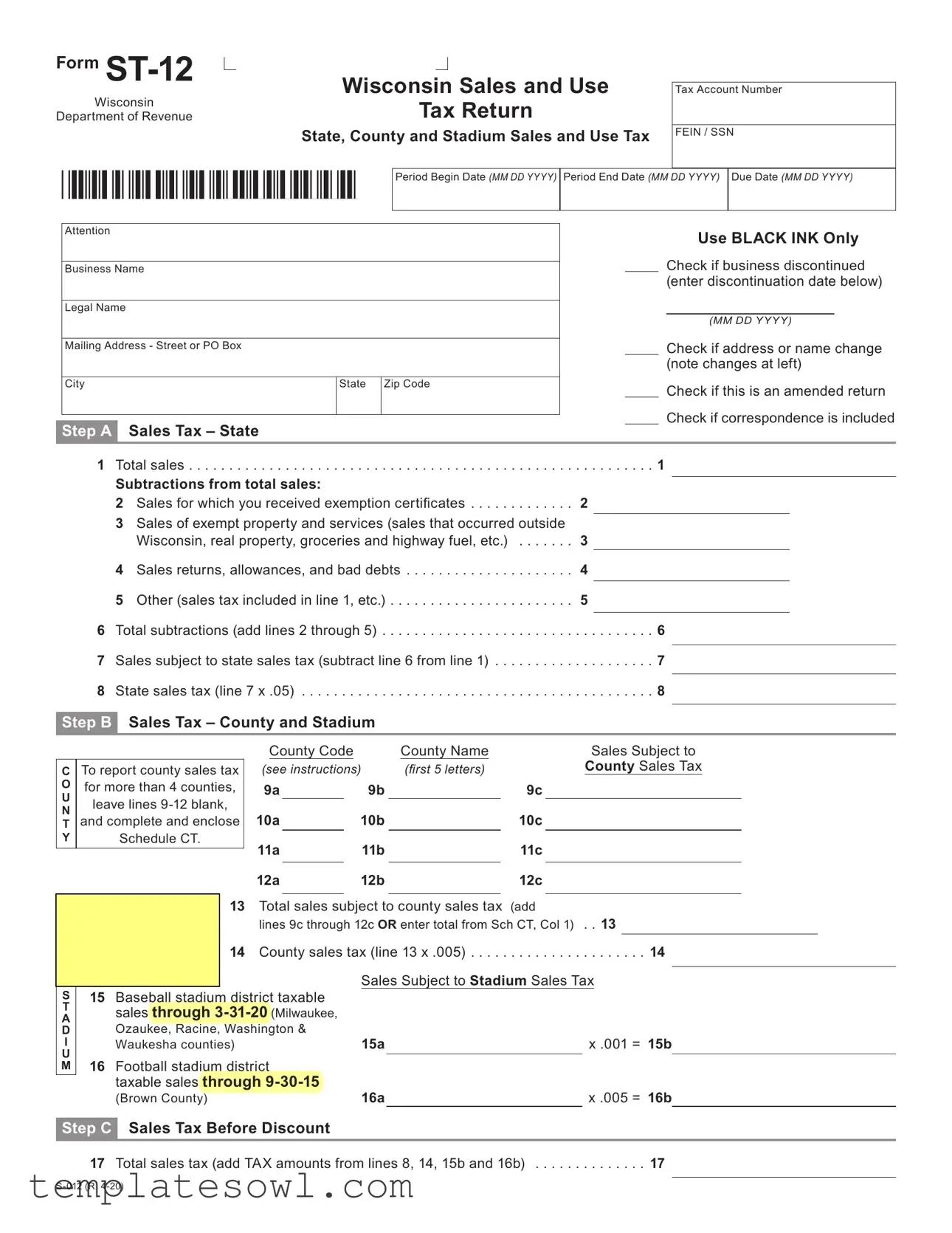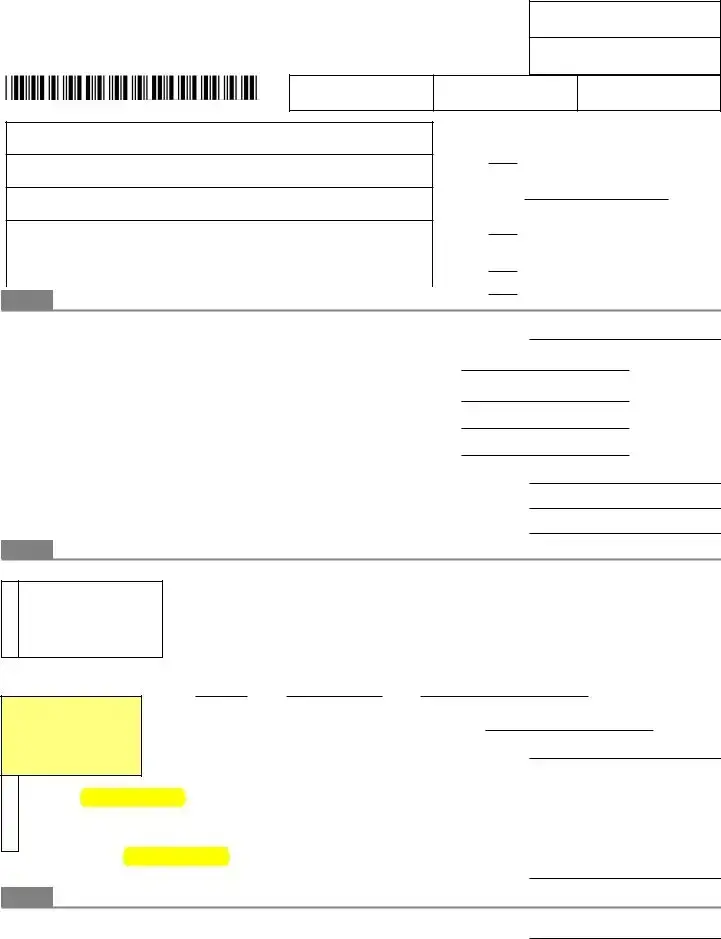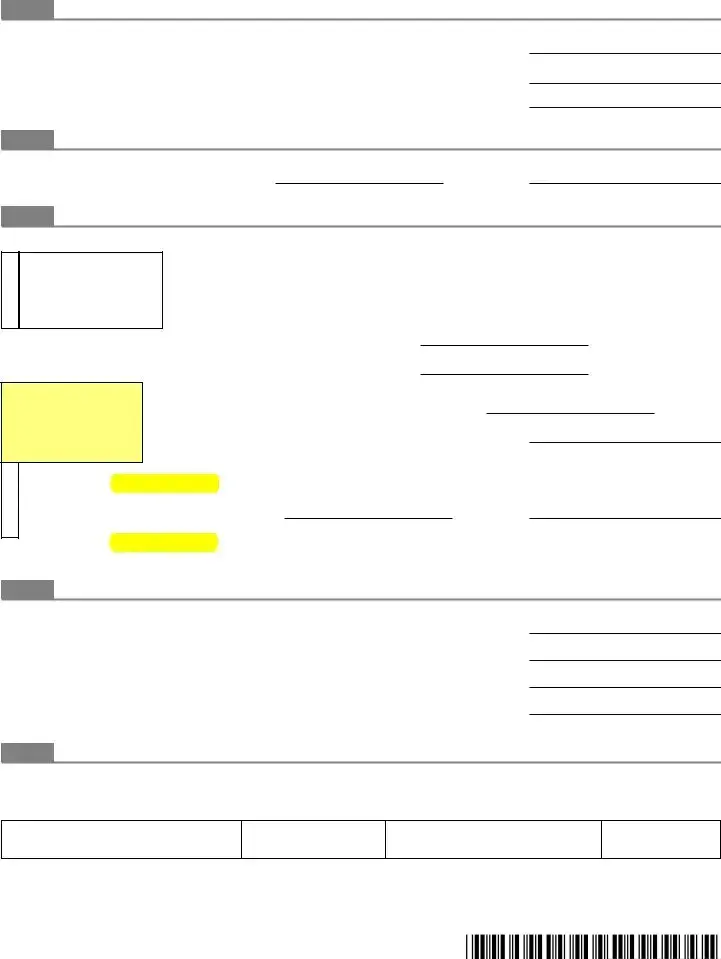The ST-12 form is an essential document for businesses operating in Wisconsin, specifically for reporting sales and use taxes to the state Department of Revenue. This form encompasses various key elements that allow businesses to accurately account for their taxable sales during a specific reporting period. It includes sections for recording total sales, subtractions from those sales such as exemptions or returns, and the calculation of state and county sales taxes. Additionally, the form provides spaces for reporting any purchases subject to use tax, thus ensuring that both sales and use tax obligations are fulfilled. The ST-12 also captures crucial information such as the business's name, address, tax account number, and contact details. As you navigate the form, it’s important to note options like indicating name changes or discontinuing business operations. Completing this form accurately is vital to avoid penalties, and understanding its layout can significantly streamline the filing process for businesses involved in Wisconsin's commerce.


